Public sector: economic overview
This analytical note brings together key economic data and analysis in relation to the Scottish public sector, covering both its size and pay levels. It considers how the size and employment in the public sector has changed over time and how it compares to other parts of the UK and internationally.
Public Sector Pay
Pay levels
As illustrated in Chart 10, public sector employees in Scotland and the UK tend to be on average better paid than the private sector. Some of the reasons for this are discussed in more detail later. To better compare pay between the sectors, we look only at pay for full-time workers. The analysis also shows net pay after income tax and national insurance, to better reflect public sector pay from the viewpoint of the employee. No adjustment is made for pension contributions.
The chart below shows median net public sector pay relative to private sector pay in Scotland and UK.
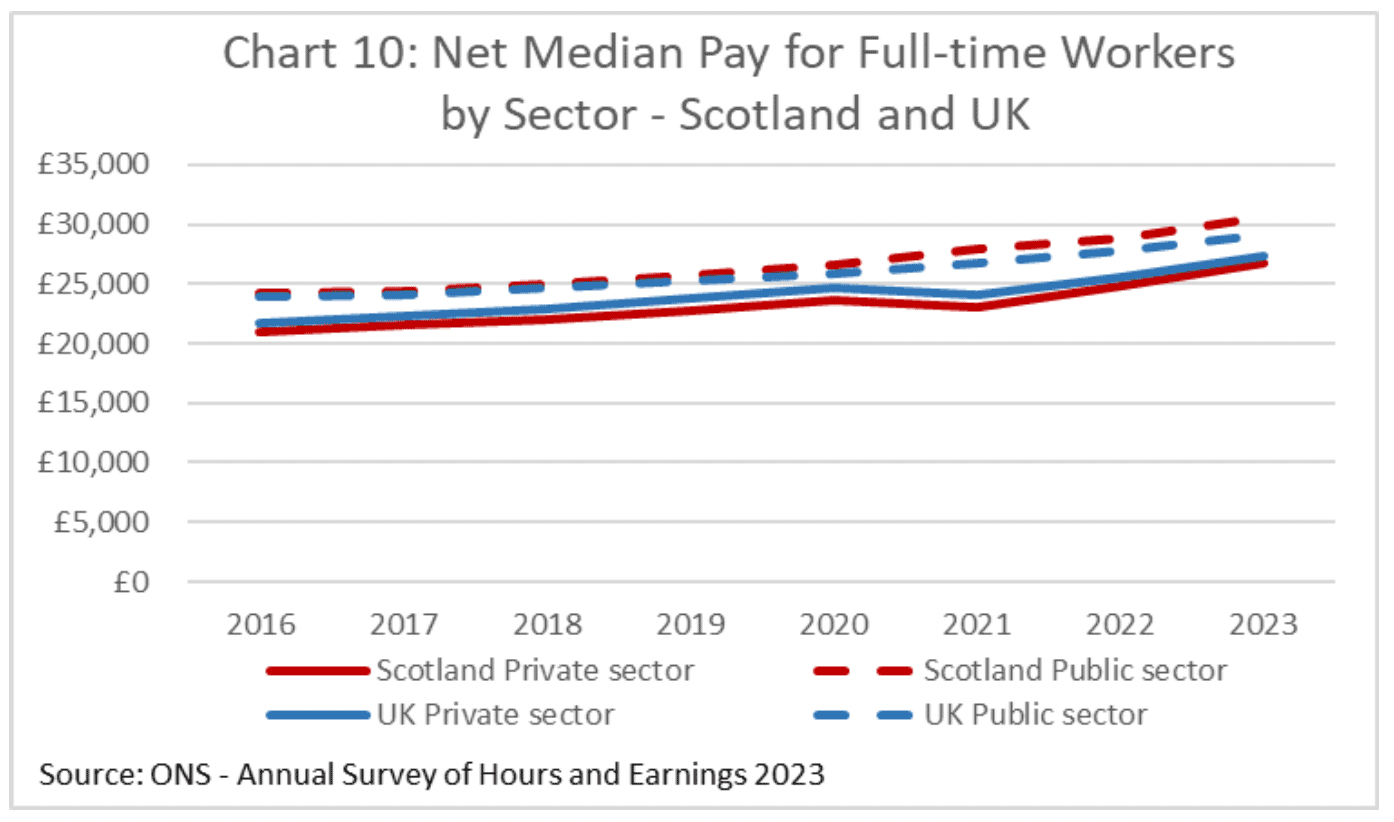
Net median pay for a full-time public sector employee is higher than net median private sector pay in both Scotland and the UK. The pay differential between public and private sector has increased since 2019 and is greater in Scotland compared to the UK. Note that the gap between public and private sector pay widened in 2021 due to the impact of furlough during the pandemic, which led to a fall in earnings for some private sector employees. The furlough scheme ended in September 2021. Comparisons of earnings in 2022 and 2023 will be unaffected by furlough, although growth rates may continue to be affected. Chart 11 shows the public – private sector net median pay differential in Scotland and the UK.
As Chart 12 shows, net median pay differentials have moved significantly since 2019. The median pay for a full-time public sector employee in Scotland was around £1,500 higher than in the UK in 2023, up from around £400 before the pandemic. Whilst net median private sector pay was around £700 lower in Scotland, a narrowing of the gap with the UK relative to 2019, when it was around £1,000 lower.
As noted above, these figures are after tax. Whilst this reflects the take-home earnings of employees, to the degree that higher taxes may also reflect a greater provision of public services, it can be useful to look at differences in gross pre-tax earnings as well. In 2023, median gross pay for a full-time public sector employee in Scotland was around £2,400 higher than in the UK in 2023.
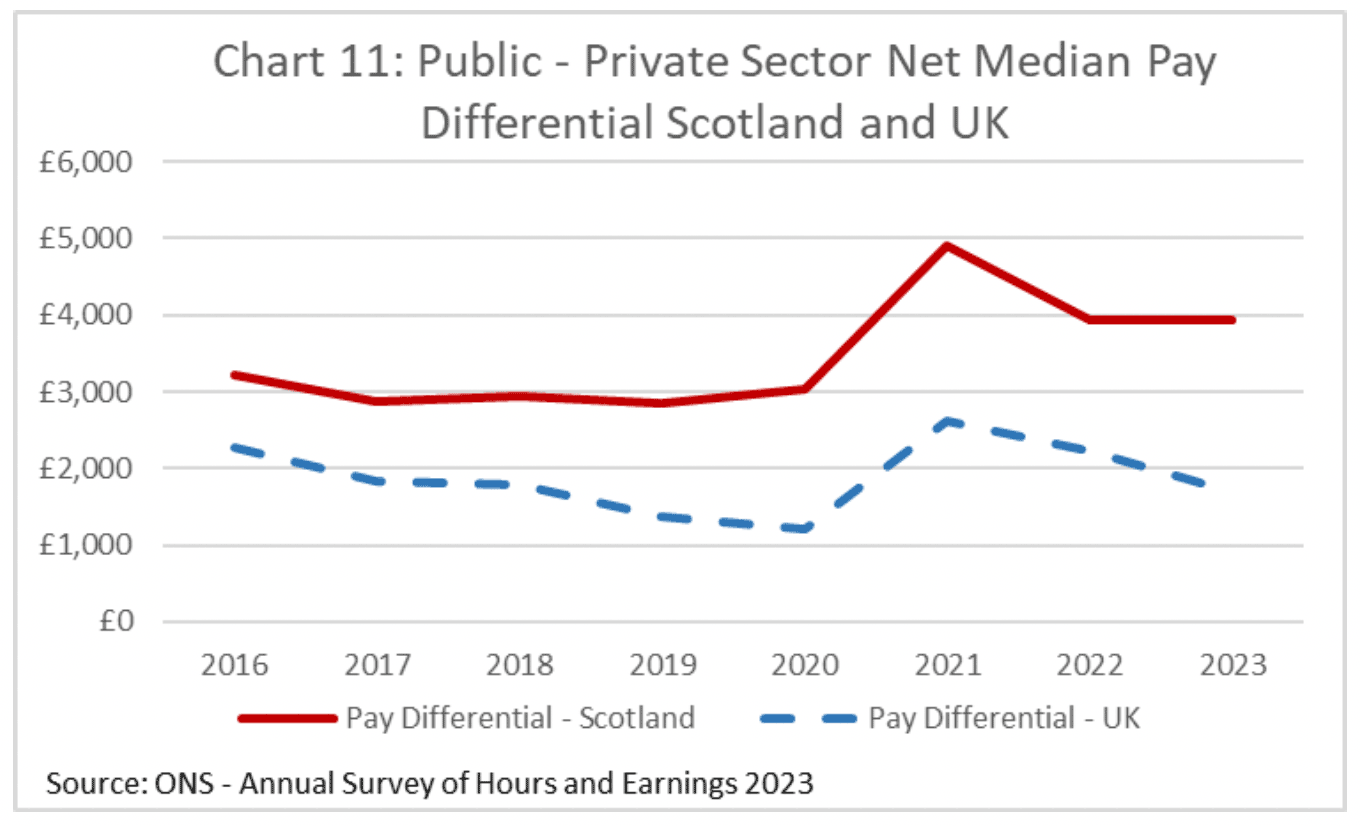
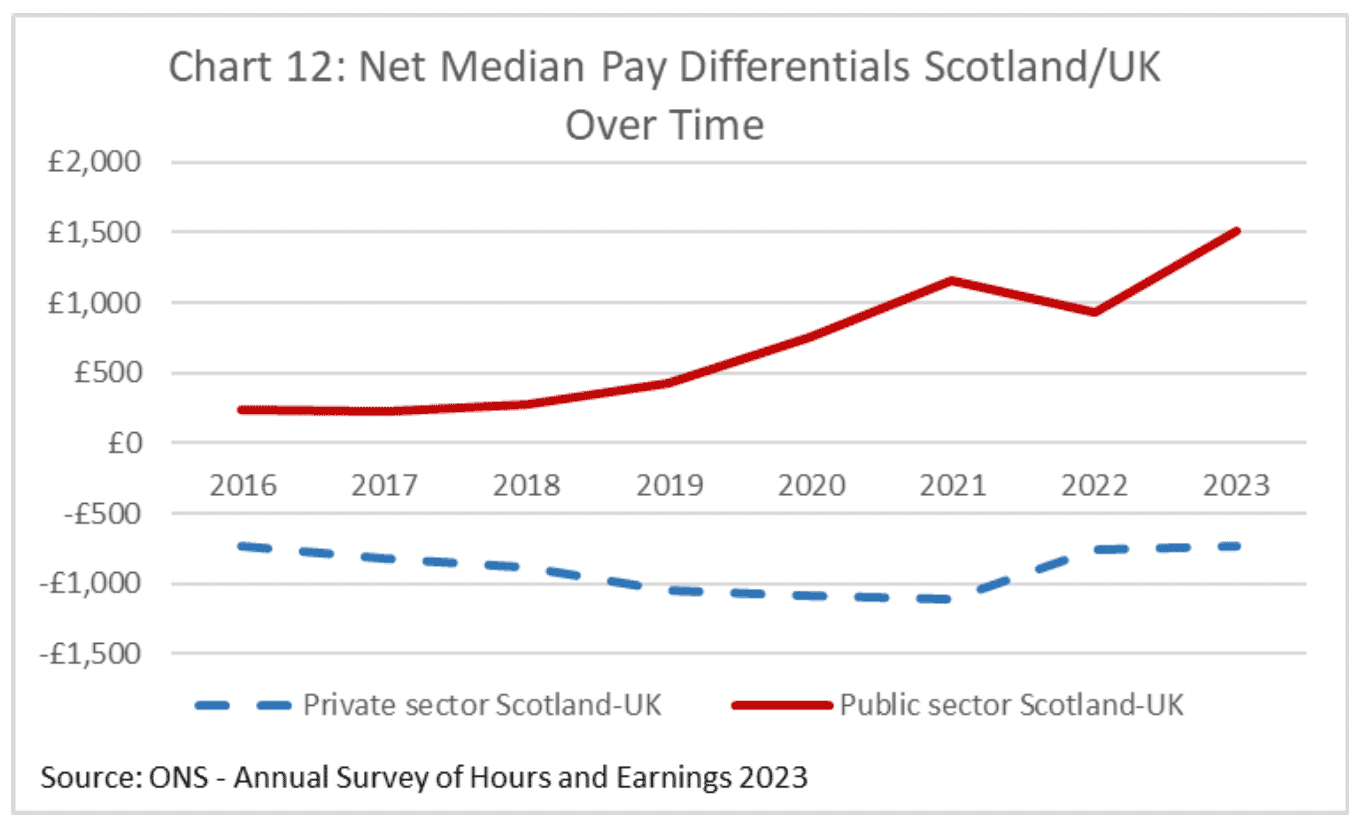
Comparing public sector pay across the UK shows that Scotland has the second highest average public sector pay of any part of the UK, behind London. Higher average public sector pay in London will reflect the fact that many public sector pay deals provide higher rates of pay to staff based in London, to reflect the higher cost of living. Chart 13 shows average full-time public sector earnings by country and region.
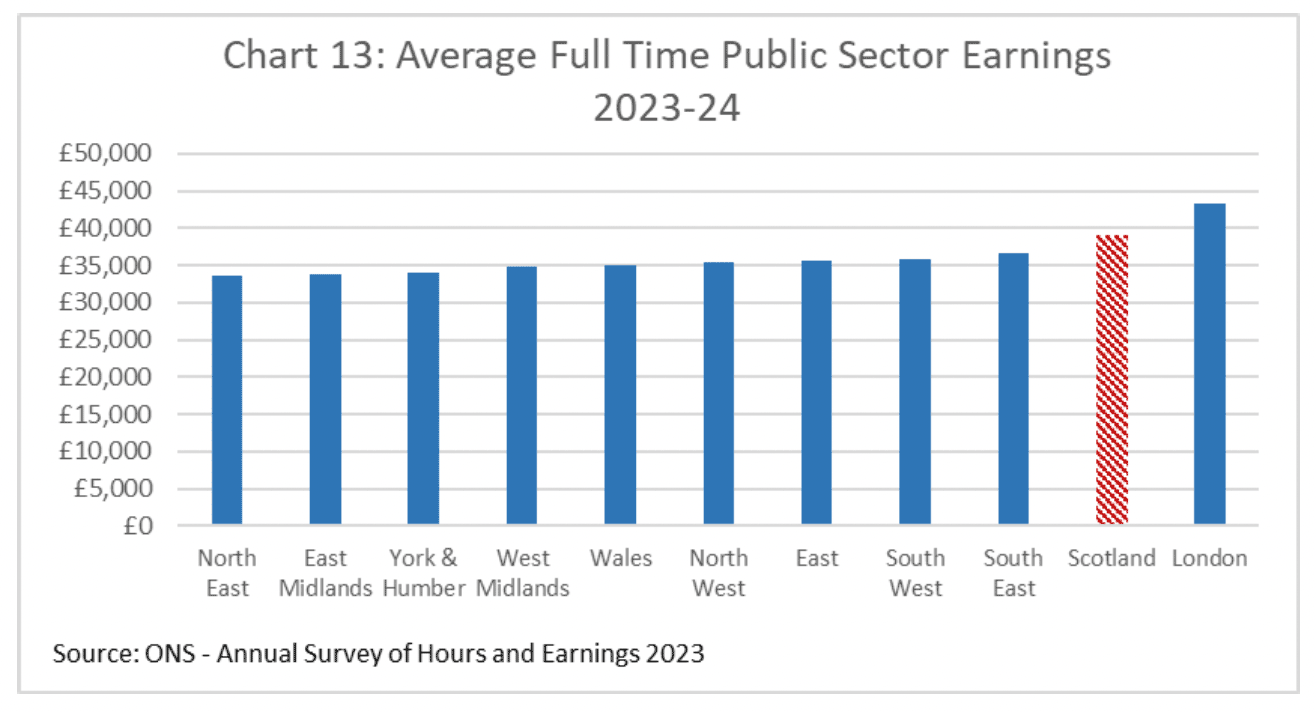
Research by the has IFS investigated the drivers of these pay differentials.[5] They find that higher pay in the public sector primarily reflects the fact that public sector workers tend to have more qualifications. Chart 14 shows the average public–private hourly pay differentials.
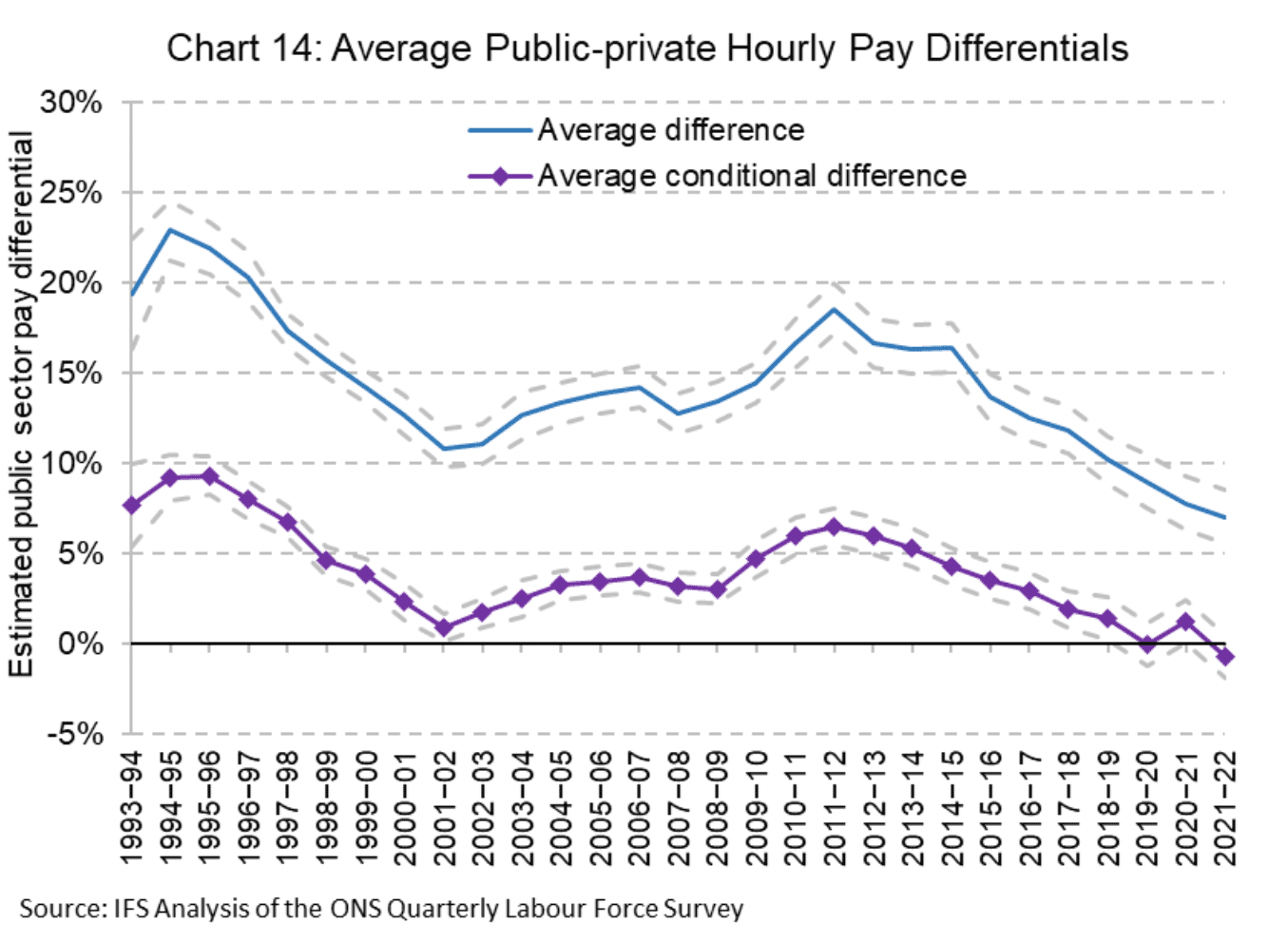
In Scotland, there is a larger pay differential between the public and private sector after controlling for differences in characteristics (public sector workers tend to be more educated, older and more experienced), and the gap has also increased over time. The IFS estimate that the average public sector worker in Scotland earned around 9% more than an equivalent private sector worker in 2019-2021. Scotland is also the only part of the UK where the public sector pay differential has increased since 2005-2007 – as shown in Chart 15.
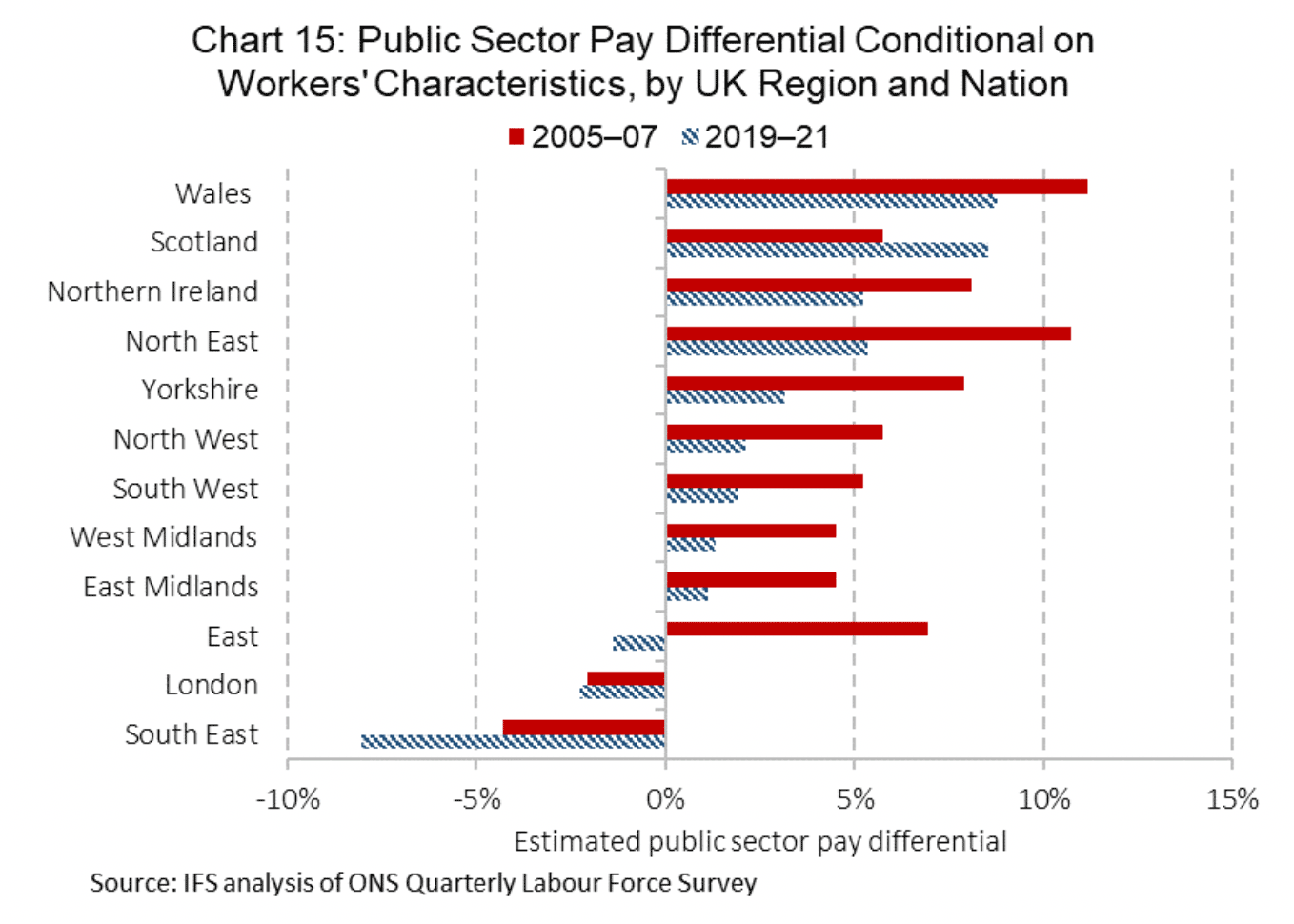
Public sector pay growth
The analysis above has considered the levels of public sector pay growth. It is also possible to look at how pay is growing over time. This analysis is slightly different from the levels analysis above, as it considers growth in pay for all workers, rather than just full-time workers. The analysis is based on the ONS Monthly Wages and Salaries Survey, which covers only Great Britain, rather than the whole of the UK, and does not have a breakdown for Scotland.
As Chart 16 shows, in GB as a whole, the rate of public sector pay growth has recently caught up with the private sector. Public sector earnings grew by 6.1% in Dec-Feb 2024, compared to 6.0% in the private sector.
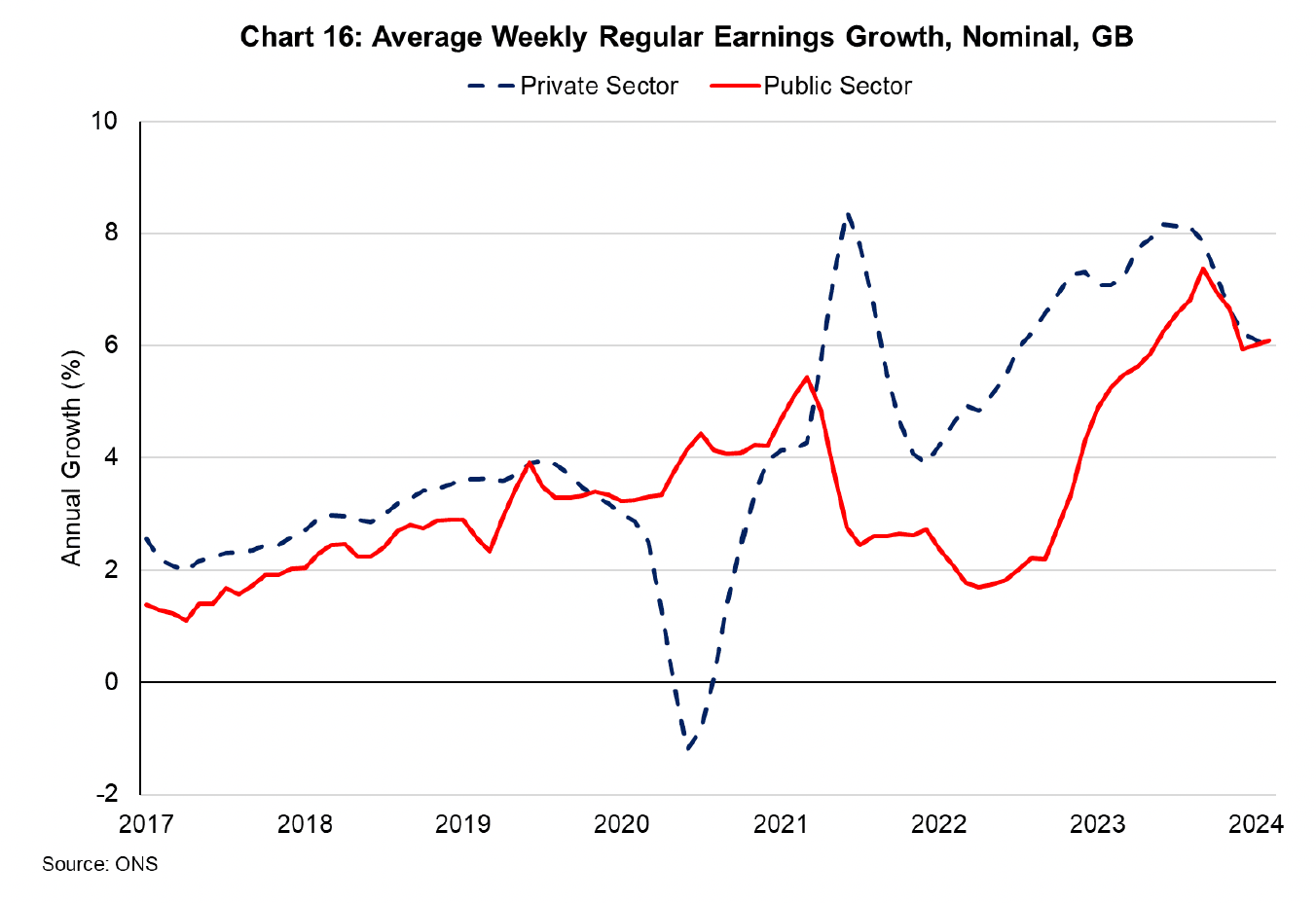
Pay and distribution
Whilst public sector pay is higher than the private sector on average (based on the median pay) in Scotland, this is not true across all parts of the income distribution. In general, higher earners tend to earn similar amounts or more in the private sector, as illustrated in Chart 17 below, whilst employees in the lower half of the income distribution on average earn around 20% more in the public sector than the private sector.
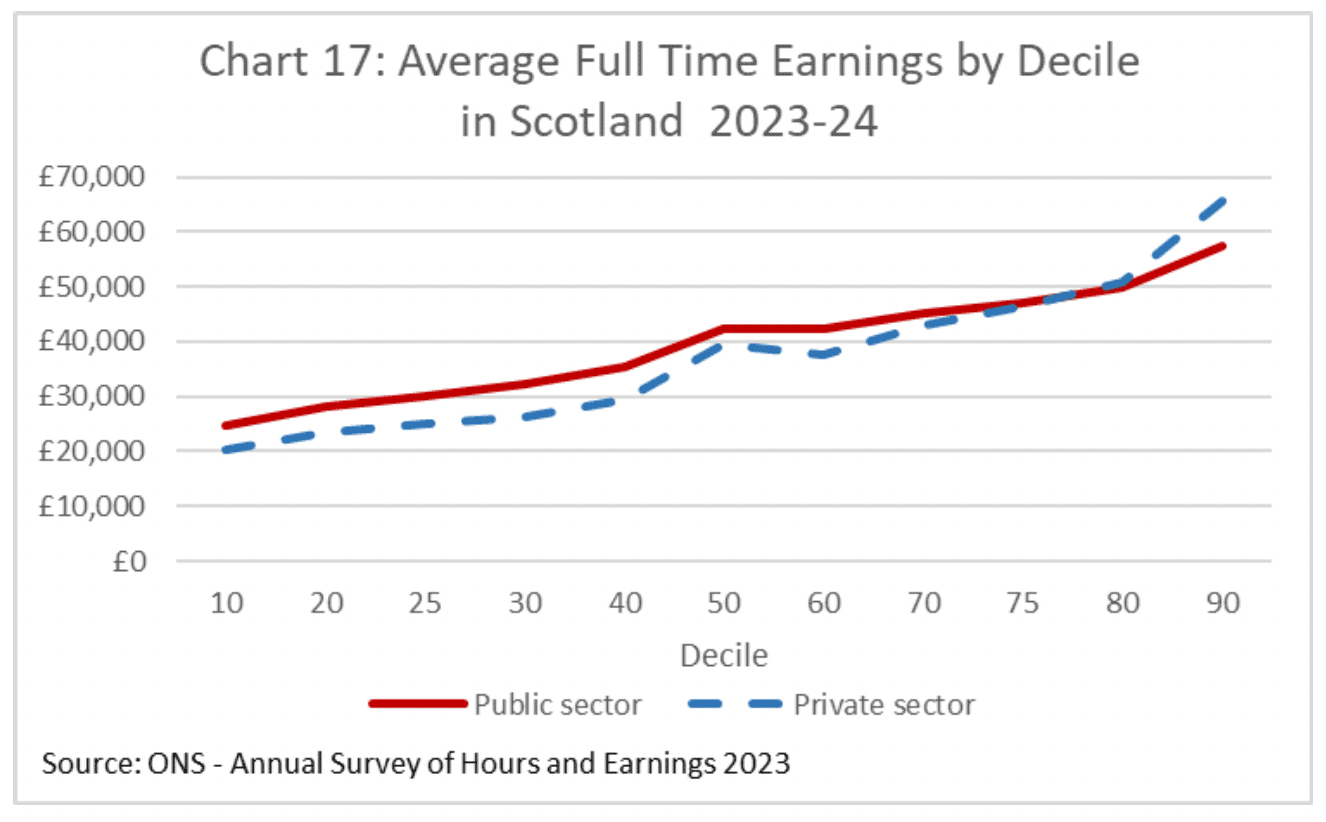
The difference between public sector pay in Scotland and the rest of the UK varies across the earnings distribution as shown in Chart 18. The main difference between Scotland and the UK in public sector pay is seen in the bottom half of the distribution, with pay more similar in the upper half.
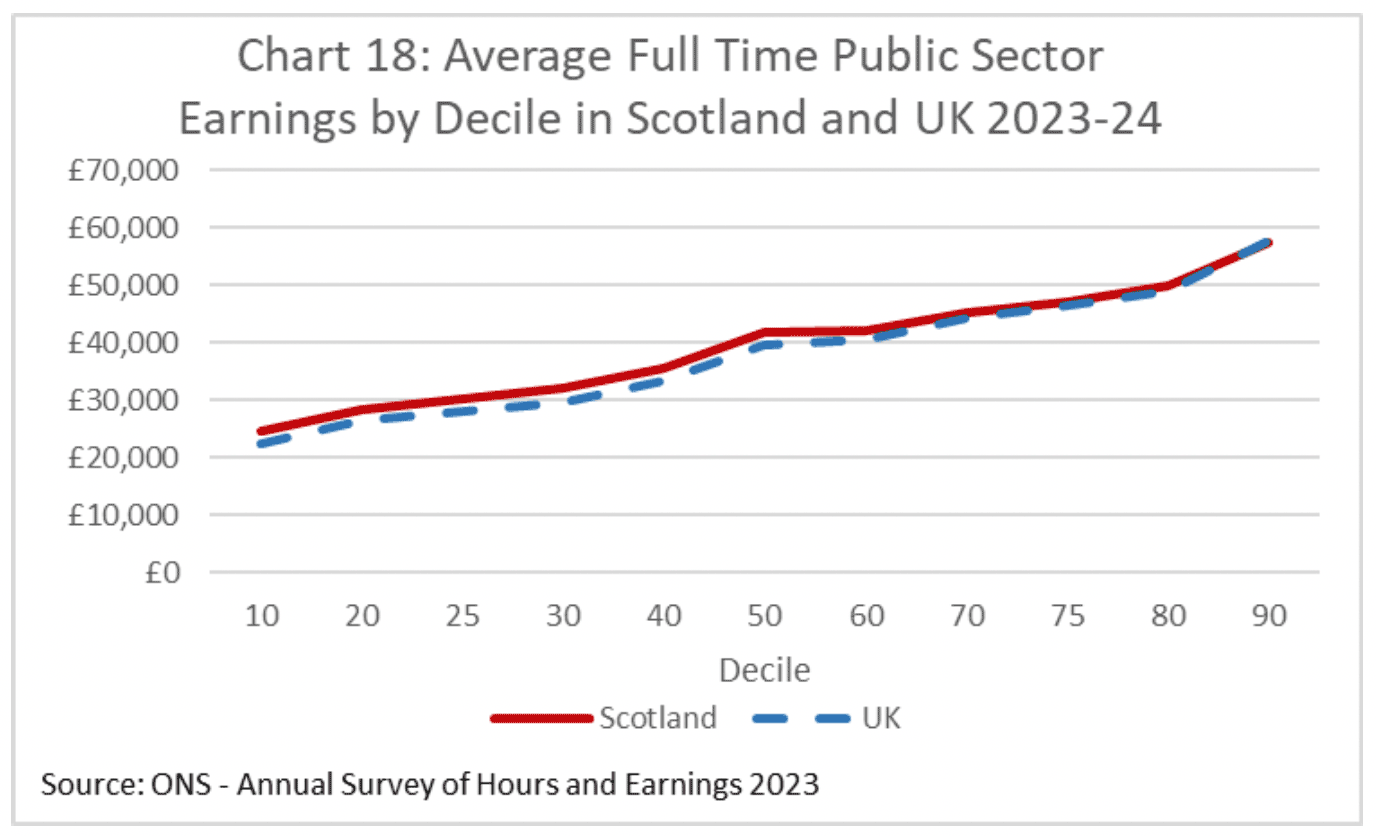
Exemptions from pay freezes for lower earners has led to pay compression, with larger increases in pay for lower public sector earners. As highlighted by the Institute for Fiscal Studies, public sector earnings in the UK for lower earners increased by 16 per cent in real terms between April 2007 and April 2023 compared to a fall of 8% in real terms for higher earners. This trend helped reduce the gender pay gap.[6]
Pay and Gender
The public sector is an important employer of females. In 2023 over 60% of people in employment in the public sector were female compared to 44% in the private sector. Chart 19 shows that the percentage of people in the public sector who were female varies considerably across Scotland, with Argyll and Bute having the lowest share at around 45% and Stirling the highest at close to 80%.
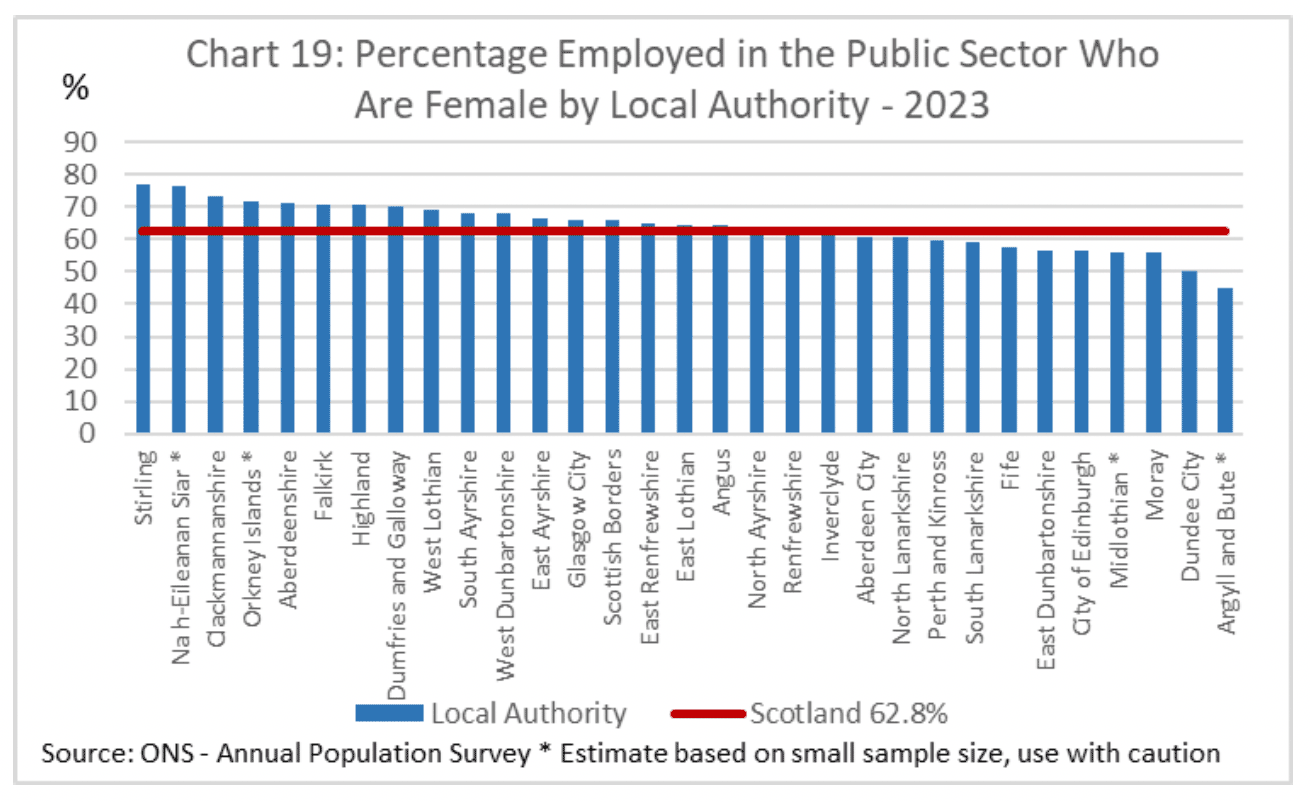
On average, the gap between pay for public sector and private sector employees is also larger for females than males. In Scotland, net median female full-time earnings in the public sector were around £6,500 more than net median female earnings in the private sector. For males the gap was around £3,500.
As noted above, public sector earnings have increased more for lower earners. This has helped contribute to a narrowing of the gender pay gap, given that females on average continue to earn less than males.
Contact
Email: OCEABusiness@gov.scot
There is a problem
Thanks for your feedback